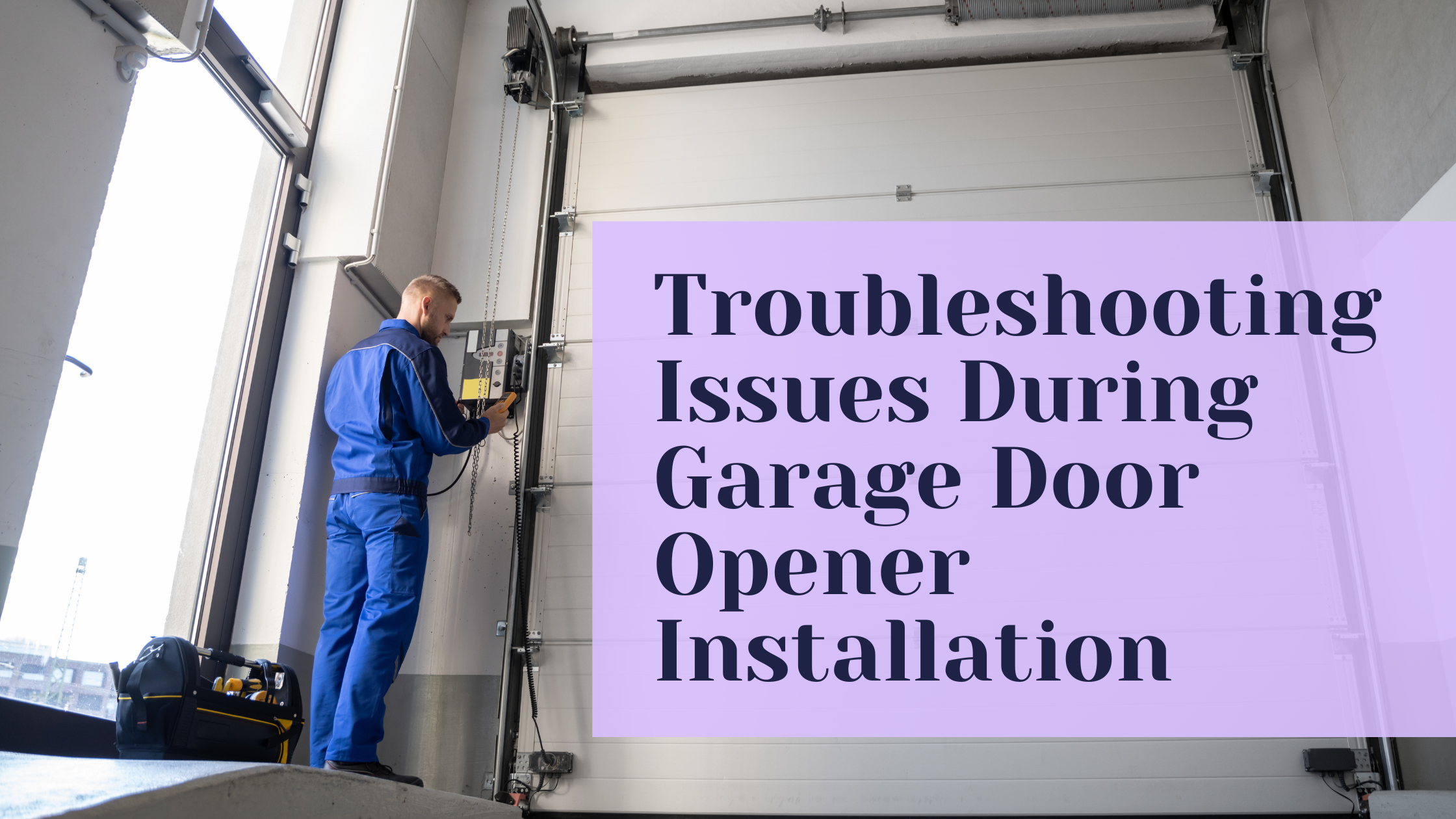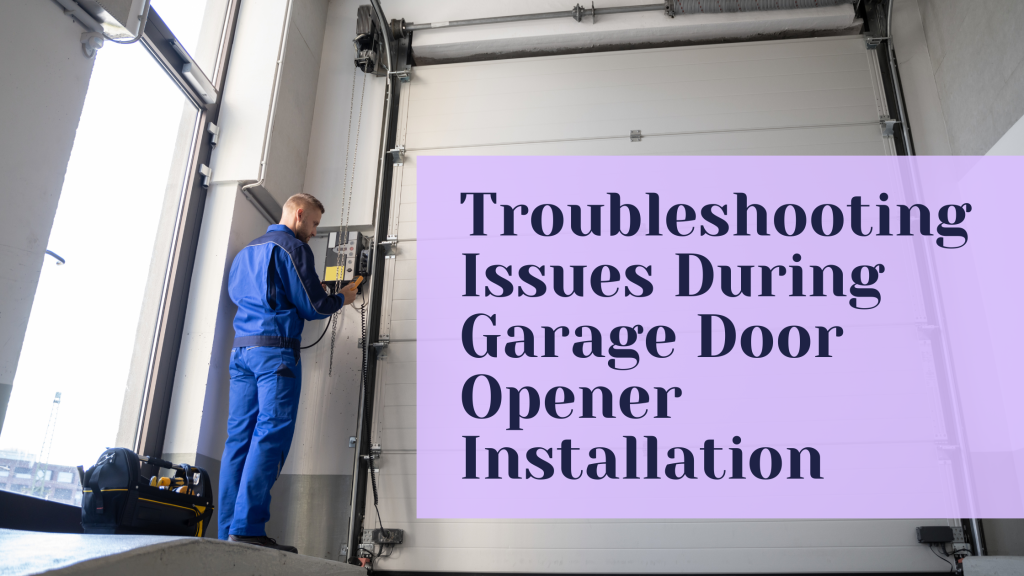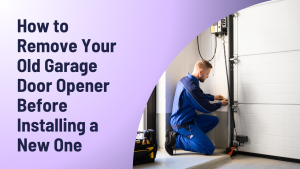Installing a garage door opener can be a fulfilling DIY project, but like any installation, it’s not without potential hiccups. If you’re installing a new automatic garage opener, you might run into some issues along the way. Whether you’re replacing a garage opener or fitting an electric garage door opener for the first time, it’s important to know how to troubleshoot common problems to ensure a smooth installation. In this guide, we’ll walk you through some typical issues during auto garage door installation and offer solutions for fixing them.
Common Issues and How to Fix Them
Problem 1: The Garage Door Opener Doesn’t Respond to Controls
When your garage door opener doesn’t respond to the remote control or wall switch, it’s frustrating, but it’s often an easy fix.
Possible Causes:
- Power supply issues: The opener may not be receiving power.
- Misaligned sensors: If the sensors are out of alignment, the door won’t respond to controls.
- Remote control problems: The remote might need new batteries, or the signal may be disrupted.
Troubleshooting Steps:
- Check power: Ensure the garage opener is plugged in and the circuit breaker is on. If the opener is hardwired, check the wiring connections.
- Inspect the sensors: Make sure the safety sensors are aligned properly and that no debris is obstructing their path.
- Test the remote: Replace the batteries in the remote control and test it again. If the issue persists, try reprogramming the remote.
Problem 2: The Door Reverses Before Closing Completely
If the garage door reverses before it’s fully closed, it can be a sign of a malfunction in the opener’s settings or the door’s mechanism.
Possible Causes:
- Incorrect force settings: The opener’s force setting might be too low, causing the door to reverse prematurely.
- Obstructions or misalignment: Any obstruction or misalignment in the door’s tracks can cause it to reverse.
- Worn-out components: Components like rollers or springs may need attention if they are causing resistance.
Troubleshooting Steps:
- Adjust the force settings: Review the opener’s manual for guidance on adjusting the force settings to ensure the door closes with adequate pressure.
- Clear the tracks: Check for debris or obstructions in the tracks that could be causing resistance. Clear them out to allow smooth movement.
- Inspect door components: Check the rollers, springs, and cables for wear and tear, and replace any worn parts.
Problem 3: Excessive Noise During Operation
Excessive noise can make using your garage door opener unpleasant, but there are a few common causes for this.
Possible Causes:
- Loose components: If components like the chain, screws, or brackets are loose, they can generate extra noise.
- Lack of lubrication: The moving parts of your opener might need lubrication to operate quietly.
- Misalignment of the rail or motor: If the rail or motor is misaligned, it can cause friction that leads to noise.
Troubleshooting Steps:
- Tighten loose parts: Ensure that all bolts and fasteners are properly tightened, particularly the rail and bracket.
- Lubricate moving parts: Apply a suitable lubricant to the chain, rail, and rollers to reduce friction and noise.
- Check alignment: Ensure the rail and motor are aligned properly. If the motor or rail is misaligned, adjust them according to the garage door opener manual.
Problem 4: The Garage Door Doesn’t Open Fully
A garage door that doesn’t open fully can be frustrating, and it may prevent your car or other items from entering the garage.
Possible Causes:
- Limit settings are off: The door’s open limit settings may be incorrectly adjusted.
- Track obstruction: The door’s tracks might be blocked, preventing the door from moving all the way.
- Spring or cable issue: If the door is heavy and doesn’t open fully, a problem with the springs or cables might be to blame.
Troubleshooting Steps:
- Adjust the limit settings: Refer to the garage opener installation manual to adjust the door’s open and close limits.
- Check the tracks: Inspect the tracks for any obstructions and clear them out.
- Inspect the springs and cables: If the springs or cables appear damaged, it’s best to call a professional for repair or replacement.
Problem 5: Remote Control or Keypad Doesn’t Work
When your remote control or keypad fails to operate the garage door, it can halt your auto garage door installation progress.
Possible Causes:
- Battery issues: The batteries in the remote or keypad may have expired.
- Programming errors: The opener might not be properly programmed to sync with the remote or keypad.
- Signal interference: Interference from other electronic devices could be disrupting the remote’s signal.
Troubleshooting Steps:
- Replace batteries: Start by replacing the batteries in your remote and keypad. Check the battery terminals to ensure they’re clean and properly connected.
- Reprogram the remote: Follow the instructions to reprogram the remote to sync with the opener.
- Reduce interference: Make sure there are no large metallic objects or other sources of interference near the opener that might disrupt the signal.
Tools and Tips for Effective Troubleshooting
Essential Tools
Having the right tools on hand can make troubleshooting easier:
- Screwdrivers and wrenches: For tightening and adjusting bolts and screws.
- Lubricants: For keeping moving parts running smoothly and quietly.
- Multimeter: For testing electrical connections.
- Level: To ensure the opener and rail are aligned correctly.
General Tips
- Consult the manual: Always refer to the automatic garage opener installation manual for guidance on troubleshooting and adjusting settings.
- Take your time: Troubleshooting can be time-consuming, so take your time to carefully check each component.
- Keep the area clean: A cluttered workspace can make troubleshooting more difficult, so keep your work area organized.
When to Call a Professional
Signs You Need Expert Help
Some issues during garage door opener installation may be more complex than simple troubleshooting can fix. If you notice:
- Electrical issues you can’t resolve.
- Damaged springs or cables that pose a safety risk.
- Persistent alignment problems despite your adjustments.
It’s best to call a professional technician to handle the repairs.
Benefits of Hiring a Technician
Hiring a professional for garage door opener installation or troubleshooting ensures the job is done correctly and safely. Professionals have the experience and tools necessary to diagnose issues and perform repairs that might be beyond DIY capabilities.
Preventing Installation Issues in the Future
Proper Planning Before Installation
To avoid issues during automatic garage door opener installation, make sure you thoroughly plan the installation. Check the alignment of tracks and door components, and ensure the opener is the correct size and power for your garage door.
Regular Maintenance Post-Installation
To prevent problems down the line, perform regular maintenance on your garage opener. This includes:
- Lubricating moving parts.
- Checking the alignment of sensors.
- Testing the safety features.
By staying proactive with maintenance, you can extend the lifespan of your garage door opener and avoid common issues during operation.




